Bone Tumors and Soft Tissue Tumors
What are bone tumors and soft tissue tumors?
are growths that are not normal. They are lumps of tissue that form when abnormal cells grow without the normal controls to stop them. In many cases, doctors do not know why this happens.
- Bone tumors start in the skeleton, such as in the spine, leg bones, ribs or arm bones.
- Soft tissue tumors start in muscles, , fat, blood vessels or other tissues.
Tumors can be either benign or malignant.
- Benign tumors are not cancer and do not spread from their original site. They can come back at the site where they started.
- Malignant tumors are a form of cancer and may spread (metastasize) to other parts of the body. They can come back at their original site as well. Malignant tumors in bone and soft tissue are called sarcomas. These include , and .
Bone and Soft Tissue Tumor Care at Seattle Children’s
Children, teens and young adults with bone and soft tissue tumors receive care from the highly experienced teams in our Cancer and Blood Disorders Center for malignant tumors and Orthopedics and Sports Medicine for benign tumors.
Types of Bone Tumors and Soft Tissue Tumors
We treat all types of bone tumors and soft tissue tumors.
-
Benign bone tumors
Benign bone tumors are much more common than malignant bone tumors, and they almost never become cancerous.
These types of benign bone tumors are found most often in children and young adults:
- Nonossifying fibromas are usually found in long bones that are still growing, such as the thighbone (femur).
- Exostoses or osteochondromas contain both bone and and usually grow out from a bone.
- Unicameral bone cysts are holes in a bone that fill with fluid. They are most common in the upper arm bone (humerus) and the upper thighbone. They are also called simple or solitary bone cysts.
Read more about types of benign bone tumors (PDF) (Spanish).
-
Benign soft tissue tumors
There are many types of benign soft tissue tumors. They are much more common than cancerous soft tissue tumors.
These are the common types of benign soft tissue tumors in children:
- Fibromas usually happen in the hands and feet.
- Lipomas and lipoblastomas are made up of fat cells.
- Neurofibromas and schwannomas grow in nerves branching off the spinal cord.
Vascular malformations look like tumors but are not. They are collections of abnormal blood or .
-
Cancerous bone tumors
Malignant bone tumors start inside the bone. They can spread cancer cells to other parts of the body, often through the blood, to the lungs or other bones. Bone cancer can put your child’s limb and life at risk.
These are the most common types of bone cancer in young people:
- Osteosarcoma can start in any bone in the body. In children, it most often starts near the knee. Usually, the tumor cells make abnormal bone. Sometimes osteosarcoma spreads to other bones or the lungs.
- Ewing sarcoma, which is less common, can also start in any bone. Sometimes it spreads to other bones or the lungs.
-
Cancerous soft tissue tumors
Malignant soft tissue tumors (soft tissue sarcomas) are less common in children than in adults.
These cancers can start in any of the soft tissues that connect or support other structures. These tissues include muscles, tendons, fat, blood vessels, , nerves and the soft tissues in and around joints. We treat all types of soft tissue sarcoma in children.
Rhabdomyosarcoma (rab-doe-my-o-sar-ko-ma) is the most common type. This cancer can happen in almost any muscle of the body. A child who develops rhabdomyosarcoma at a young age may have a . Our Cancer Predisposition Clinic screens and cares for children born with these syndromes.
What are the symptoms of bone tumors and soft tissue tumors?
Symptoms of tumors in the bones and soft tissues can be hard to identify and describe. It’s important for your child to see a doctor if you notice a physical change, such as a lump, or if your child complains of pain.
The symptoms depend on:
- The type of tumor
- Where it is
- How much it has grown or spread
Here are general guidelines.
-
Bone tumor symptoms
The most common symptom of bone tumors is pain.
- Your child may feel like the pain is in a bone or joint.
- The pain may get worse over time.
- The pain can happen at night or when your child is resting.
It is common for a child who has a malignant bone tumor to complain about pain for months before seeing a doctor.
Sometimes, benign bone tumors are not painful. They may cause pain if they weaken the bone or rub on nerves or tendons.
Bone tumors may also cause:
- A lump
- Swelling
- A broken bone
Bone tumors in the spine may cause:
- Muscle weakness
- Tingling or numbness in the legs
- Problems with bowel or bladder control
-
Soft tissue tumor symptoms
The most common symptom of soft tissue tumors is a lump or mass. These tumors may or may not cause any pain.
Cancer in a muscle often causes a lump that grows quickly.
Other symptoms may depend on where the tumor is. For example:
- A tumor in or around the can cause problems with peeing (urination).
- A tumor at the base of the skull can press on nerves, causing weakness or pain in the head or face.
How are bone tumors and soft tissue tumors diagnosed?
Your child’s doctor will:
- Start with a thorough exam
- Ask about your child’s health background
Then the doctor may suggest tests to help tell:
- If your child has a tumor
- The type of tumor
- If it is cancerous
- If it has spread
-
Imaging studies
The doctor may want to have pictures taken of the inside of your child’s body ().
Often, we can see and assess benign bone tumors by taking an of the bone.
If an X-ray does not give enough information about your child’s tumor, we may use:
- MRI (magnetic resonance imaging) scan
- CT (computed tomography) scan
- PET (positron emission tomography) scan
- Ultrasound
-
Biopsy
If suggest that the tumor may be cancer, your child will have a . In the hospital, surgeons will cut out a small piece of the tumor and check it under a microscope for signs of cancer. This test is important to tell the type of tumor and help us plan treatment.
Our surgeons use extra care when doing the biopsy to avoid the risk of spreading the tumor cells. In certain cases, our surgeons or do a biopsy using a needle instead of with surgery.
How are bone tumors and soft tissue tumors treated?
Our treatment goal is to give your child or teen the best chance of a long and healthy life. Everyone on your team works to cure your child’s disease, support your family during treatment, prevent serious side effects and provide follow-up care.
Your child’s treatment will depend on:
- If the tumor is benign or cancerous
- The type of tumor
- The location and size of the tumor
- How fast the tumor has grown
- If it has spread to other parts of the body
- Your child’s age and medical history
Treating Benign Bone Tumors
Some benign bone tumors only need to be checked by a doctor once or twice a year. Some may go away on their own.
Sometimes, a benign bone tumor can cause problems while it grows. It can weaken your child’s bone and make the bone more likely to break. Tumors also can press on nerves, muscles or tendons and cause pain. If this happens, your child should see an orthopedic surgeon.
Some benign bone tumors may need surgery, but some can be treated with less invasive procedures. Others can just be checked to make sure they do not cause problems.
Treating Benign Soft Tissue Tumors
With some painless tumors, we simply watch for changes. If a benign soft tissue tumor is painful or growing larger, it may need to be removed.
The surgeon will remove the tumor and may have to remove some muscle as well.
After surgery, your child may have physical therapy to regain strength, movement and confidence.
Treating Cancerous Bone Tumors
Many children, teens and young adults with bone cancers have more than 1 type of treatment. Most have chemotherapy, then surgery to remove as much of the cancer as possible. Doctors may also suggest because it works well against some types of bone cancer.
"Our goal is always the same: Cure the disease and get these kids back to their lives.”
-
Chemotherapy
Doctors may use anticancer medicine (chemotherapy):
- As your child’s main treatment for bone cancer
- Before surgery to shrink or kill a tumor
- After surgery to kill any cancer cells that might remain
- Both before and after surgery
The kind of medicines and how long they are given depend on the type of cancer your child has.
We check your child with and physical exams to see if the chemotherapy is working to slow tumor growth or shrink it.
Children with sarcomas receive chemotherapy at our Seattle hospital campus in:
- Our 48-bed Cancer and Blood Disorders Center – Inpatient (as an inpatient)
- The outpatient infusion unit (by clinic appointments as an outpatient)
See more about getting chemotherapy at Seattle Children’s.
-
Surgery
The kind of surgery done for bone cancer depends on:
- The size of the tumor
- Where it is located
- If the cancer cells have spread
Our surgeons are skilled and experienced in doing many types of procedures. These include:
- Limb-sparing surgery, where surgeons remove the tumor and any bone and cartilage affected by it. This usually leaves the nerves, muscles and tendons around the area so that your child can keep their leg or arm. This is also called limb salvage. Depending on where the tumor is, the surgeon may use a bone transplant (also known as a bone graft) or a metal implant, such as a special type of joint replacement, to replace the bone that was removed. Some of these joint replacements can be made longer to match a child’s or teen’s growth.
- Amputation, where surgeons remove large parts of an arm or leg. Sometimes we amputate because of the size or location of the tumor. But sometimes patients choose it over other options. For many, this is best for disease control and for keeping active after they get better. After an amputation, we can fit your child with an artificial limb (prosthesis) and help them adjust to using it.
- Rotationplasty, a unique way to rebuild a child’s leg after part of it has been removed because of cancer around the knee. After removing the part affected by cancer, surgeons reattach the healthy lower leg at the thigh, facing backward. With a lower-leg prosthesis, the backward ankle works like a knee joint. For some growing children, this is the best choice for staying active and playing sports.
-
Radiation
Radiation therapy uses a machine to send high-energy beams to destroy cancer cells and shrink tumors. Doctors aim the radiation at the place where they know or suspect there is cancer.
Radiation therapy works well to shrink or kill many types of tumors. Doctors sometimes use radiation before surgery so the tumor is easier to remove or after surgery to kill any cancer cells that may still be in the body.
The best radiation treatment for your child depends on their tumor. Our options include proton therapy, which may be better for tumors in places where side effects of treatment tend to be serious or lasting. We offer this treatment through our partner, Fred Hutchinson Cancer Center, which has the only proton therapy center in the Northwest.
Learn more about Seattle Children’s Radiation Therapy Service.
-
Physical and occupational therapy
No matter which treatment your child has, they will have extensive physical therapy to improve their flexibility and mobility. This will help them return to their usual activities. The physical therapist (PT) uses play and exercise to help build strength and coordination and reduce pain.
Some children may need crutches or other adaptive equipment after surgery. Our occupational therapists (OTs) help your child learn to use equipment. The OT can show your child new ways to do tasks of daily life, if needed.
Treating Cancerous Soft Tissue Tumors
For a malignant soft tissue tumor (soft tissue sarcoma), treatment often depends on where the tumor is. Most children have surgery to remove the tumor, as well as and .
-
Chemotherapy
Our doctors use chemotherapy to reduce the size of soft tissue sarcomas before surgery. In some cases, doctors give chemotherapy after surgery to kill any cancer cells that may still be in the body.
The kinds of medicines and length of treatment depend on the type of cancer your child has. Researchers are studying new mixes of medicines to find the best mix for each type of disease.
To check if the chemotherapy is working to shrink the tumor or slow its growth, we do regular physical exams and imaging studies.
Our patients receive chemotherapy at our hospital campus in Seattle. They may stay overnight in our Cancer and Blood Disorders Center – Inpatient or get treatment at our outpatient infusion unit without having to stay overnight.
See more about getting chemotherapy at Seattle Children’s.
-
Radiation therapy
We use radiation therapy to treat some soft tissue sarcomas. Your child might have radiation therapy before or after surgery, or they might have radiation therapy on its own.
The best radiation treatment for your child depends on their tumor. Our options include proton therapy, offered at Fred Hutch Proton Therapy, the only proton therapy center in the Northwest.
Learn more about Seattle Children’s Radiation Therapy Service.
-
Surgery
During surgery, we remove as much of the tumor as possible, along with some of the healthy tissue around it. For larger tumors in certain parts of the body, our orthopedic and oncology surgeons work with our plastic surgeons to do complex to improve how your child’s body works or how it looks after their tumor is removed.
After surgery, your child may have physical therapy.
-
Targeted therapy
We do if your child’s tumor:
- Is a type linked to certain genetic changes
- Does not respond to treatment
- Comes back after treatment
- Has spread to other areas before treatment begins
If tests show that your child’s cancer is caused by the NTRK fusion or other specific genetic changes, their treatment options may include medicines.
-
Clinical trials
Many of our patients with sarcomas take part in research studies of new treatments along with their standard treatment. These studies — called clinical or therapeutic trials — include studies of new medicines or new ways to combine medicines.
Your child’s doctor will talk with you about any new treatment options that might help your child. Then you can decide whether you want your child to take part.
The STRIvE and ENLIGHTen phase 1 trials may be an option for children and young adults with tumors that are difficult to treat (refractory) or that come back after treatment (relapsed). In these studies, researchers reprogram the body’s infection-fighting T cells to find and destroy cancer cells.
Learn more about cancer clinical trials at Seattle Children’s
- Find many clinical trials offered at Seattle Children’s on our Current Research Studies page or on ClinicalTrials.gov. Read our guide about searching for trials on ClinicalTrials.gov (PDF).
- Contact us at 206-987-2106.
- Email us.
- Read more about cancer research and clinical trials at Seattle Children’s.
Follow-Up Care
No matter which type of tumor or which treatment your child has, follow-up care is important. We will check your child regularly for months to years after treatment and take care of any health concerns that arise. Some tumors — even benign tumors — have a risk of coming back, so it is important to watch your child’s health closely.
Most of our patients who had cancerous tumors visit Seattle Children’s for follow-up care. The doctor will let you know the best follow-up routine for your child. If you live far from Seattle, your child may get some of their lab work or in your own community.
Our Cancer Survivor Program provides long-term follow-up care to help young people stay healthy after cancer treatment.
Why choose Seattle Children’s for bone tumor and soft tissue tumor treatment?
We are experts at treating all types of bone and soft tissue tumors in children and young adults, whose bodies are still growing. We will diagnose your child’s tumor and provide the right treatment for their needs, whether their tumor is benign or malignant. Seattle Children’s program in pediatric bone and soft tissue tumors is the largest in the Northwest and among the most experienced in the nation.
Our Orthopedics and Sports Medicine team is involved in diagnosing and treating both benign and malignant tumors in bone or soft tissue.
Our Bone Tumor and Sarcoma Clinic, which brings together experts in orthopedics and cancer, cares for children with malignant tumors. The clinic is part of our Cancer and Blood Disorders Center.
-
Multidisciplinary team for complete care
- Seattle Children’s has surgeons trained in treating bone, muscle and joint problems in children (pediatric orthopedic surgeons). Some have specialized dual training in both pediatrics and tumors, including extra training in how to treat a wide range of that cause benign musculoskeletal tumors.
- Our Cancer and Blood Disorders team includes surgeons trained in treating malignant tumors that affect the soft tissue and bones (orthopedic oncology surgeons).
- In our Bone Tumor and Sarcoma Clinic, orthopedic surgeons work side by side with pediatric oncologists. The clinic team meets as a group each week to discuss each child’s care in detail. This way all our specialists can work together to provide the safest, most effective care for your child. Our team meetings keep us in close contact about how your child is doing.
- Bone and soft tissue tumors may affect many parts of the body. Depending on your child’s illness, their care team may also include general surgeons; neurosurgeons; ear, nose and throat (ENT) surgeons; urologists; gynecologists; or plastic surgeons. Other hospitals refer patients to us for tumors that are difficult to safely remove.
- If your child has cancer, they will benefit from the work of physician-scientists at Fred Hutchinson Cancer Center and UW Medicine, as well as at Seattle Children’s. The National Cancer Institute has named our partnership a comprehensive cancer center.
-
Advanced therapies, including clinical trials
- We offer state-of-the-art treatments and clinical trials that other hospitals may not provide. Our advanced options for cancer include anticancer medicine (), surgeries of many kinds, various types of , and .
- Our surgeons are skilled in many types of special procedures, including and . For some young children who have part of a leg removed, we use a “growing prosthesis” to lengthen their affected leg as they grow.
- For children who need radiation therapy for cancer, proton therapy may be an option. Proton therapy delivers radiation more precisely than X-rays. We offer this treatment at Fred Hutch Proton Therapy, the only proton therapy center in the Northwest.
- Children and young adults with malignant solid tumors that are difficult to treat (refractory) or that come back after treatment (relapsed) may be able to take part in clinical trials that boost the immune system with CAR T-cell therapy. Dr. Katie Albert leads the STRIvE and ENLIGHTen research studies.
- We offer many targeted therapies for cancer. One example is a new drug called Vitrakvi (pronounced vih-TRAK-vee) for children whose cancer cells have a change called an NTRK gene fusion.
-
Research to advance care
- The physician-scientists on our team do research to understand the genetics and of sarcomas. The knowledge they gain helps us create new treatments.
- We have one of the nation’s largest pipelines of CAR T-cell trials for children and young adults and are involved in clinical trials for many other types of treatment.
- Seattle Children’s doctors are leaders in national research groups such as the Children’s Oncology Group (COG) and Sarcoma Alliance for Research Through Collaboration (SARC). COG is the world’s largest consortium of childhood cancer specialists.
- Read about orthopedics research and cancer research at Seattle Children’s.
-
Specialists in caring for children and young adults
- Our specialty is treating children’s disease while helping them grow up to be healthy and productive adults.
- Our team cares for your whole child. We don’t just treat their disease. As needed, your child will receive care from specialists in nutrition, pain management, palliative care, pharmacy, physical therapy and emotional health. Read more about the supportive care we offer.
- Treatment for these tumors may be very different for children than for adults because pediatric tumors respond to therapy in different ways than adult tumors. We plan your child’s treatment based on years of experience and the newest research on what works best — and most safely — for children. Our experts focus on how treatments today affect growing bodies in the future.
- We know that teens and young adults with cancer have different challenges than young children. Our Adolescent and Young Adult Cancer Program focuses on their needs. An important part of planning for life after cancer is protecting your ability to have biological children (fertility preservation).
-
Support for your whole family
- Learning that your child has a tumor can be scary. We help take positive steps right away by offering appointments soon, especially to children who might have cancer and need to be seen urgently.
- During visits, we take time to explain your child’s condition. We help you fully understand your treatment options and make the choices that are right for your family.
- Our doctors, nurses, Child Life specialists and social workers help your child and your family through the challenges of their illness. We connect you to community resources and support groups.
- At Seattle Children's, we work with children and families from around the Northwest and beyond. Whether you live nearby or far away, we can help with financial counseling, schooling, housing, transportation, interpreter services and spiritual care. Read about our services for patients and families.
What to Expect
See how to prepare and what to expect when coming to Seattle Children’s Orthopedics and Sports Medicine.
See how to prepare and what to expect when coming to Seattle Children’s Cancer and Blood Disorders Center.
Benign Bone and Soft Tissue Tumors Team
For benign bone and soft tissue tumors, your child will receive care from a doctor or from Orthopedics and Sports Medicine.
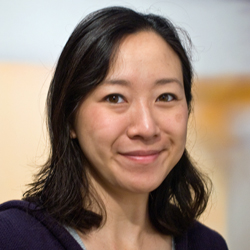

Antoinette W Lindberg, MD
View ProfileJenifer Moe Matsuda, PA-C
View Profile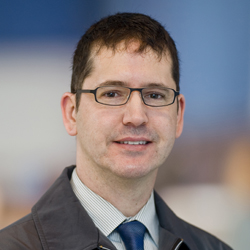

Gregory K Parker, PA-C
View Profile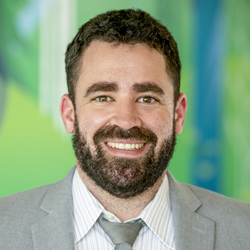

Jesse Lorin Roberts, MD, MS
View Profile

Suzanne E Steinman, MD
View ProfileBone Tumor and Sarcoma Team
Seattle Children’s Bone Tumor and Sarcoma Clinic team meets as a group every week to discuss each child’s cancer care in detail. In addition to doctors and , your child’s team may include physical therapists and experts in prosthetics.
As needed, your child may also get treatment from a or surgeons who specialize in neurosurgery; ear, nose and throat (ENT) surgery; urology; general and thoracic surgery; gynecology or plastic surgery.
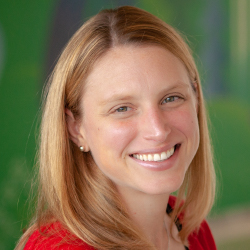

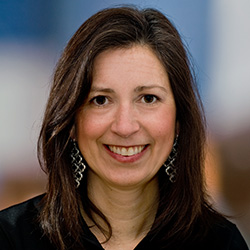

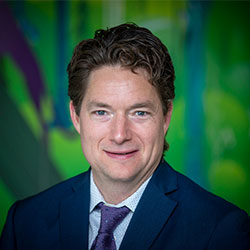

Mark Nathaniel Fluchel, MD, MSCI
Attending Physician, Cancer and Blood Disorders Center
View Profile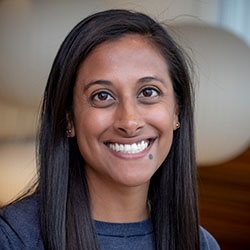



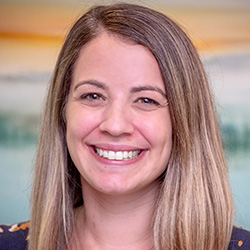

Brittany Lee Greene, MD, MA
Attending Physician, Director of Ethics in the Cancer and Blood Disorders Program
View Profile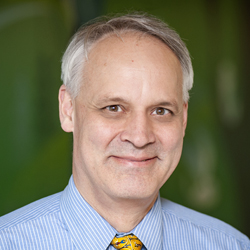

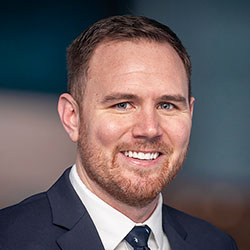

Tyler G Ketterl, MD, MS
Medical Director, Adolescent and Young Adult Oncology; Medical Director of the Comprehensive Fertility Care and Preservation Program
View Profile

Antoinette W Lindberg, MD
View Profile

Jesse Lorin Roberts, MD, MS
View ProfileContact Us
Orthopedics and Sports Medicine
Contact Orthopedics and Sports Medicine at 206-987-2109 for an appointment, a second opinion or more information if your child has been diagnosed with a benign bone or soft tissue tumor or you are concerned they might have this type of tumor. You do not need a referral to make an appointment.
Providers, see how to refer a patient to Orthopedics.
Bone Tumor and Sarcoma Clinic
If you would like an appointment with the Bone Tumor and Sarcoma Clinic, ask your child’s primary care provider to refer you.
If you have a referral or would like a second opinion, contact the Cancer and Blood Disorders Center at 206-987-2106 or by email.
Providers, see how to refer a patient to the Bone Tumor and Sarcoma Clinic.
Related Links
Paying for Care
Learn about paying for care at Seattle Children’s, including insurance coverage, billing and financial assistance.
